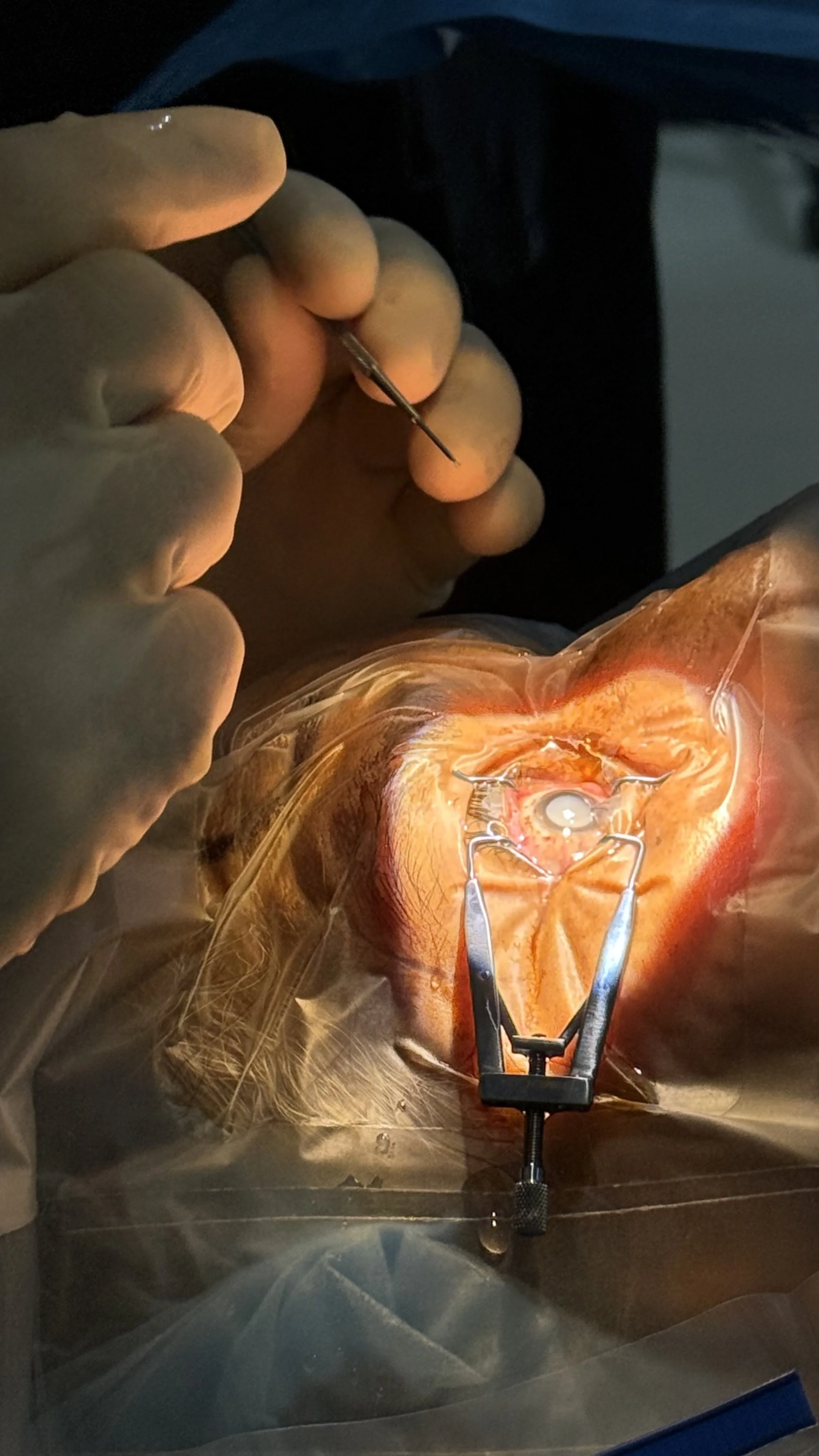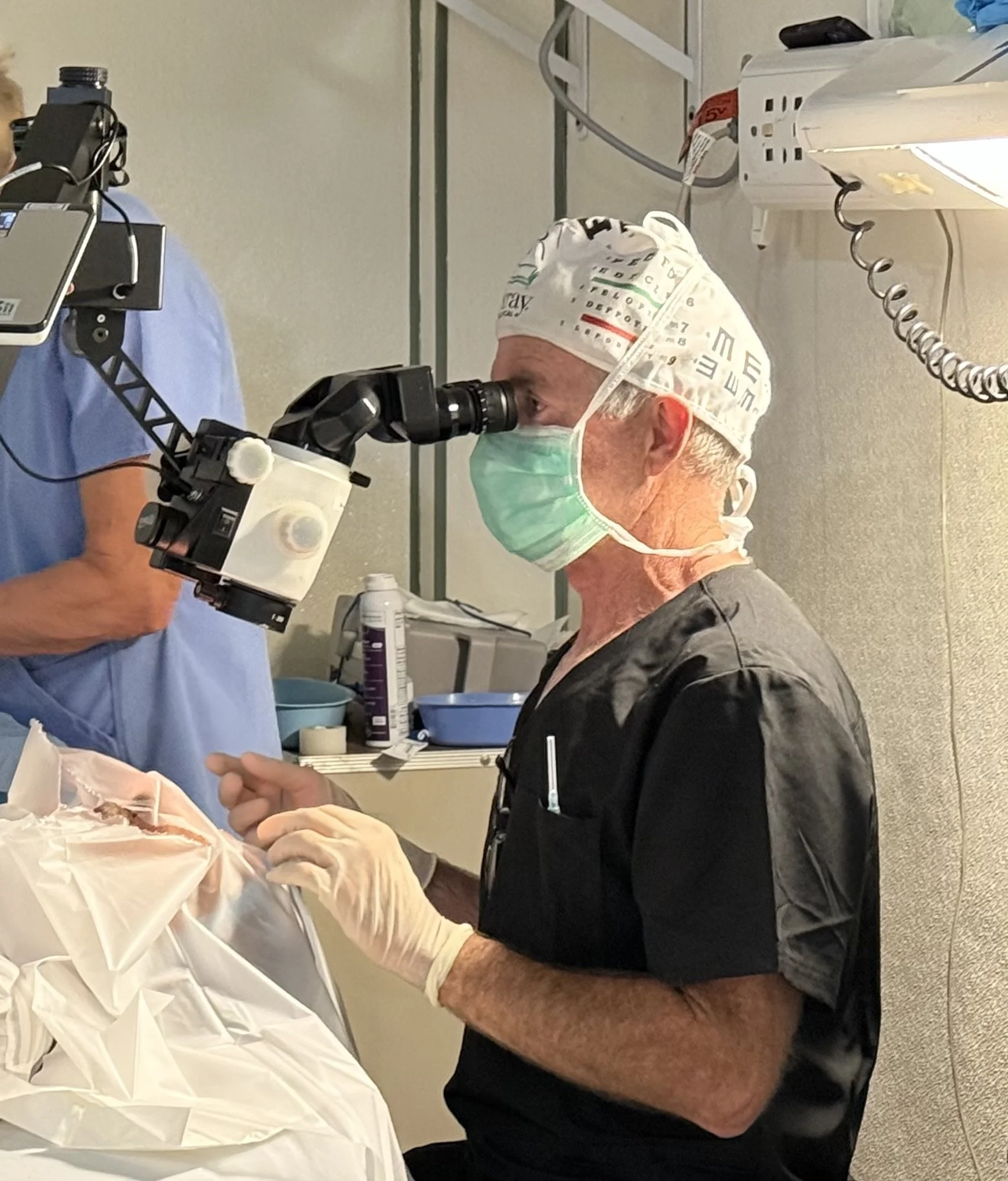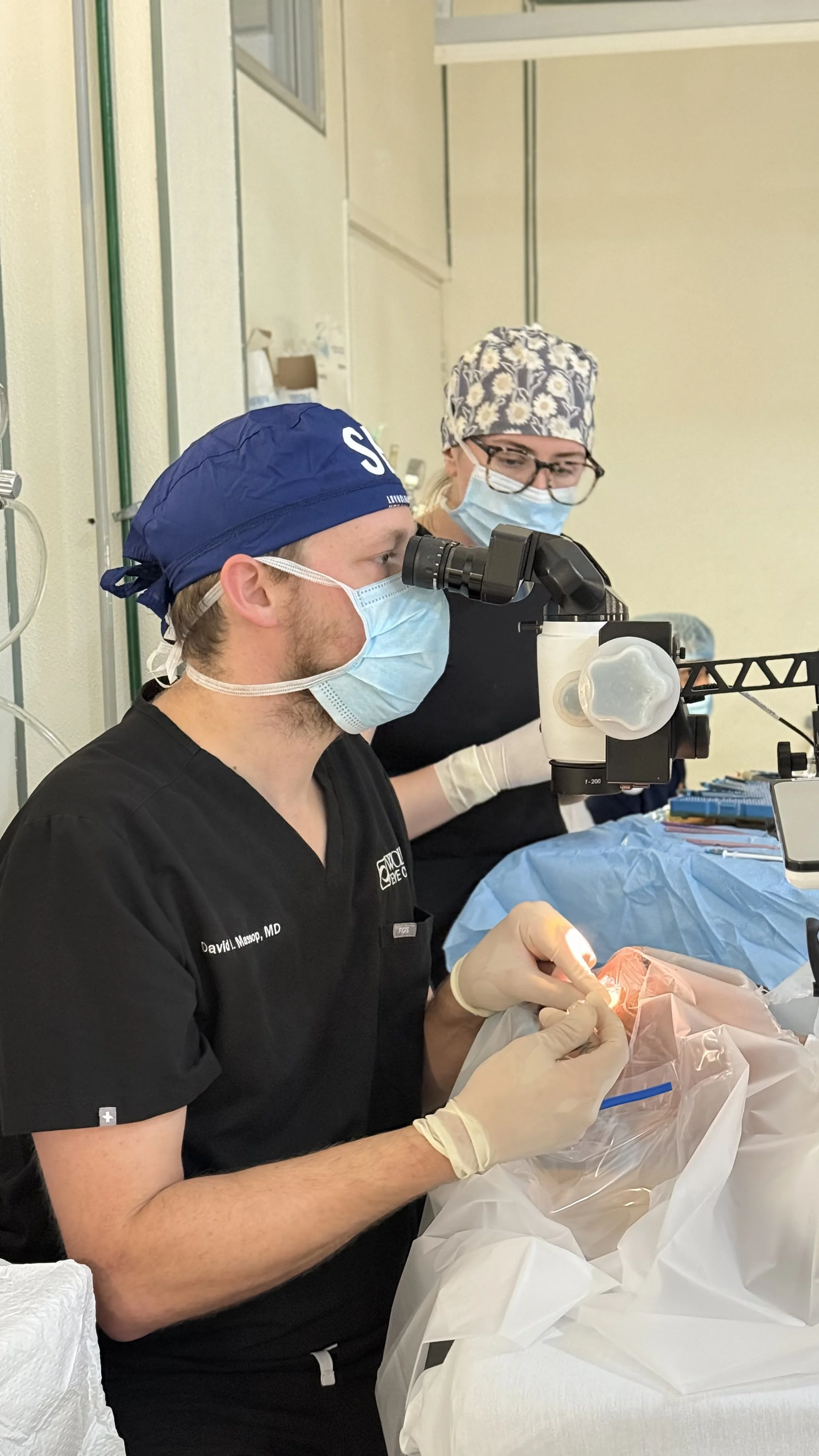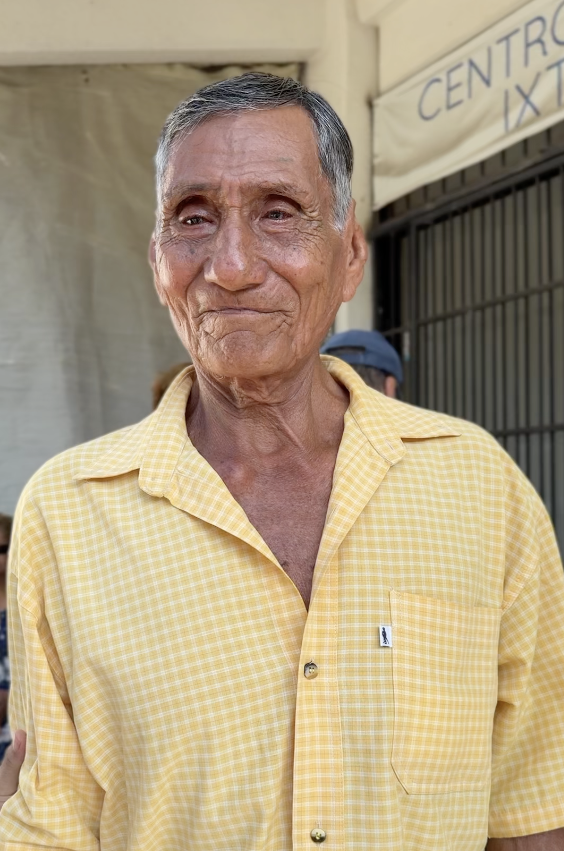Inside the Surgery
What are cataracts?
In a healthy eye, light passes through a clear lens and focuses on the retina, allowing us to see sharp details. A cataract forms when that lens becomes clouded by protein buildup, blocking light and causing blurry or dim vision.
Cataracts are most often related to aging, but they can also develop from eye injury, diabetes, or prolonged sun exposure. Over time, the lens can become so opaque that a person can see only light - no shapes, faces, or colors.
In poor and rural regions of the world, untreated cataracts are the leading cause of blindness, responsible for nearly a third of all global cases.
Put your hand two inches in front of both eyes and you’ll see only light. That’s what our patients see before surgery.
Why are they so common among the poor?
In the United States, cataracts are treated early and routinely, but in many developing areas, access to ophthalmologists and surgical equipment is extremely limited. The cost, distance, and lack of local infrastructure mean cataracts progress unchecked until patients are completely blind.
For those we serve in Guerrero, Mexico, surgery is not just about restoring vision - it’s about restoring independence, dignity, and livelihood. Many patients have been unable to work, care for their families, or even recognize their loved ones for years.
How cataract surgery works
Cataract surgery removes the cloudy natural lens of the eye and replaces it with a clear intraocular lens (IOL). The new lens is permanent, requires no maintenance, and allows patients to see clearly again—often within hours.
In the United States, surgery typically costs about $2,500 per eye under local anesthesia. The procedure is done as an outpatient surgery, and most patients return home the same day.
For our mission, the cost is about $50 per eye - made possible through donated supplies, volunteer teams, and faith-filled generosity.
The technique used in our missions: MSICS
In developing countries, we often see “white” or hyper-mature cataracts—completely opaque lenses that have hardened over time. These require a specialized technique called Manual Small-Incision Cataract Surgery (MSICS).
Unlike the high-tech ultrasound method (phacoemulsification) used in the U.S., MSICS relies on precision, skill, and reusable manual instruments rather than expensive machines and disposable tools. This makes it ideal for mission work. It is low-cost, sustainable, and proven equally effective in restoring sight to even the most advanced cases.
Each operation can take as little as 10 minutes.
The material cost can be under $50 per case.
Instruments are sterilized and reused, allowing hundreds of surgeries to be performed during a single mission.
The cataracts we remove are not like what you see in the U.S., they’re like pieces of black coal inside the eye.
Other conditions we treat
In addition to cataracts, our teams also treat pterygia - a fleshy growth on the white part of the eye that can cover the cornea and obstruct vision. Pterygia are common among people who work outdoors in sunny climates. They are removed surgically to prevent further vision loss.
The impact of a single surgery
The results are immediate and life-changing. A patient who could once see only light opens their eyes to see faces, color, and the world again.
For many, this is more than medical treatment - it is a moment of light and renewal, both physically and spiritually.
For $50, we can give someone back their sight, their work, their family, and their hope.
Restore Vision. Renew Hope.
Your gift brings light, dignity, and independence to someone living in darkness.



